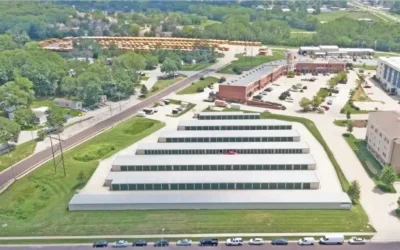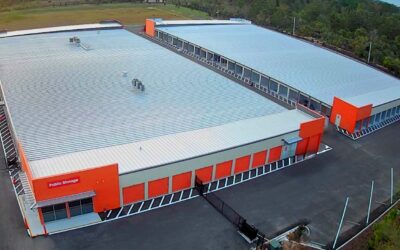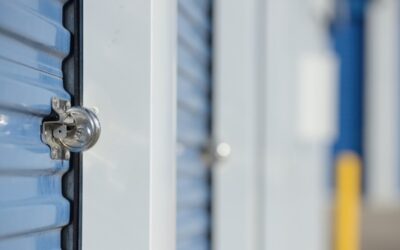Has the recent self-storage boom reach its peak?
Data from the U.S. Census Bureau shows self-storage construction spending fell from an all-time high of $491 million in May 2018 to $472 million in June 2018 and $431 million in July 2018. That’s a two-month decline of 12 percent.
While the numbers for the same three months in 2017 were considerably lower, the latest figures suggest that self-storage construction has peaked for the time being.
However, that’s not cause for alarm, as industry experts said recent development activity in self-storage has been overheated. Long-term it is expected that there will be a gradual decline in construction activity as ongoing projects come across the finish line.
‘Very responsible’ cycle
Increasing property taxes, labor shortages, and falling rental rates have created a “diminished” pipeline of self-storage projects. That’s what Dean Jernigan, chairman and CEO of self-storage lending REIT Jernigan Capital, recently told analysts during its second quarter earnings call.
These factors have led to what Jernigan called “a very responsible development cycle.”
Jernigan expects the supply and demand balance to return to normal as the self-storage sector enters 2020. That would be delivery of 150 to 200 new facilities per year across the top 50 markets.
“In other words, there will still be some development,” he said, “but it will be development really just matching population growth.”
From primary to secondary
Brick by brick! Building a retaining wall by the front entrance of the new building.#selfstorage #storage #storagesolutions #storageunits #storagespace #movinghouse #middletownstorage #aquidneckisland #localbusiness #familyowned #expansion #construction #steel pic.twitter.com/MAHlWpeFSN
— Middletown Storage (@MSelfStorage) September 19, 2018
Anne Hawkins, executive vice president of market research firm STR Inc., said that while overall development activity is decreasing, some activity is shifting from primary markets to secondary and tertiary markets, as the development cycle in the smaller markets got off to a later start.
From April to August, the development pipeline in the top 25 markets narrowed from 1,611 to 1,550 facilities, according to STR. However, the number of facilities in the planning phase inched up from 766 in April to 784 in August, STR reported.
“Given the amount of attention on new supply in the industry at this point, we do think it will be more difficult for the less experienced operators and developers to obtain financing for projects, which should help to slow down development,” Hawkins said.
She added that the planning phase of the development pipeline remains on par with the activity seen four to five months ago.
“The level of construction in the near term will be determined by which of these projects make it through the pipeline,” Hawkins said.
‘Too hot’ to handle?
Recently, the pipeline has been overflowing.
This year will see the most facilities developed in one year during the self-storage boom, according to Jamie Lindau, national sales manager at Trachte Building Systems, a manufacturer of steel buildings for the self-storage industry.
In fact, he added, 2018 will be a record-breaking year for the company. However, Lindau believes the boom has plateaued, with a projected slide in development next year of about 20 percent.
“This year was just too hot in the construction cycle,” Lindau said.
For his part, Jernigan said he thinks 2018 and 2019 will be “twin peak years” for delivery of new storage facilities, although he does foresee a “dramatic” fall in construction starts between now and the first quarter of 2019.
Nonetheless, Jay Crotty, president of self-storage investment sales and financing firm SkyView Advisors, described self-storage development as “still very robust and active.” He expects the level of construction to stay steady through the rest of 2018 but start to taper off a little in the second half of 2019.
Still, in addition property tax, labor, rental and lending pressures, Crotty cited material expenses, land costs and NIMBYism as challenges facing that “robust” self-storage development activity.
Does it ‘pencil out’?
Yesterday, we got together with the @PetersonCos, Butz-Wilbern, @CubeSmart and ECS Limited to celebrate the Steel Top-out party at Commonwealth Self Storage in #Ashburn, VA! See more pics at https://t.co/E8WEJhIsf9 👷🏗 #construction #steeltopout #selfstorage pic.twitter.com/KfnJZxt32E
— R.W. Murray Co. (@RWMurrayCo) July 20, 2018
Terry Campbell, general manager of the self-storage lending team at Live Oak Bank, added that climbing interest rates also are contributing to the construction slowdown. But, as underscored by other self-storage professionals, Campbell said a pullback in construction is overdue, particularly in light of rising costs and greater difficulty in finding suitable development sites.
“When I came to Live Oak three and a half years ago, the cost for some building types were half as much, and today labor costs are at least double what they were then,” Campbell said. “These things, coupled with higher interest rates, just don’t pencil out unless you put a lot of money down and, even then, sometimes it doesn’t make sense from the standpoint of the returns that you get.”
That being said, Jernigan Capital’s investment pipeline in the second quarter was around $475 million, down just slightly from previous quarters and from the second quarter of 2017, according to John Good, the company’s president and chief operating officer.
“We continue to be very meticulous in our underwriting and deal [selection]. We’re focused on deals that we deem to be home-run deals,” Good said.







